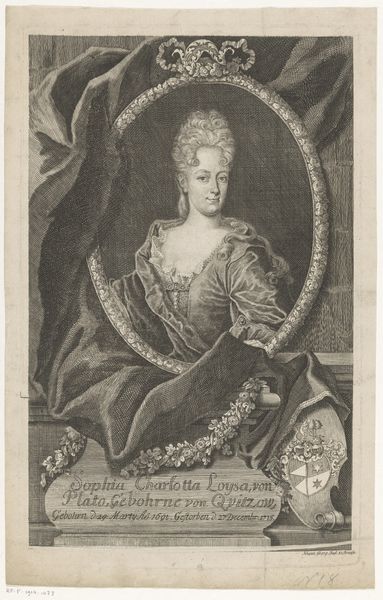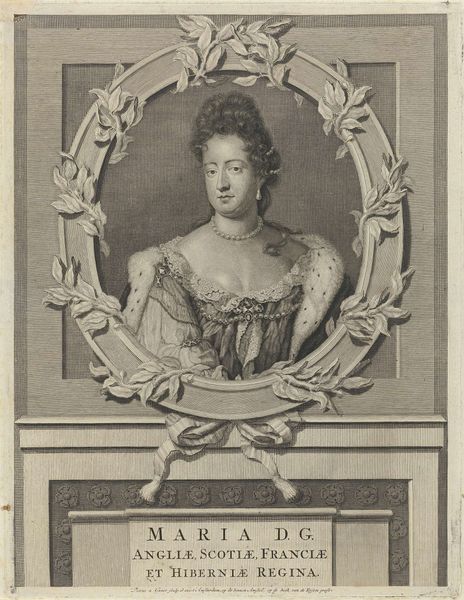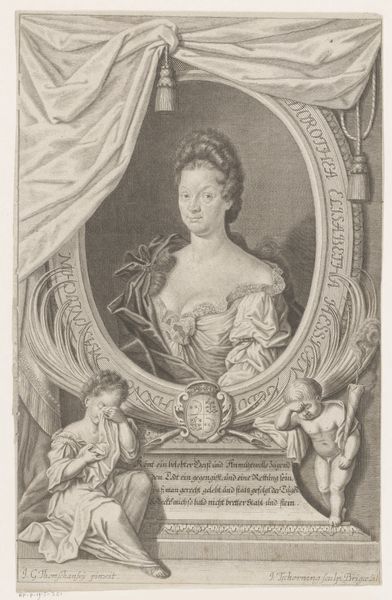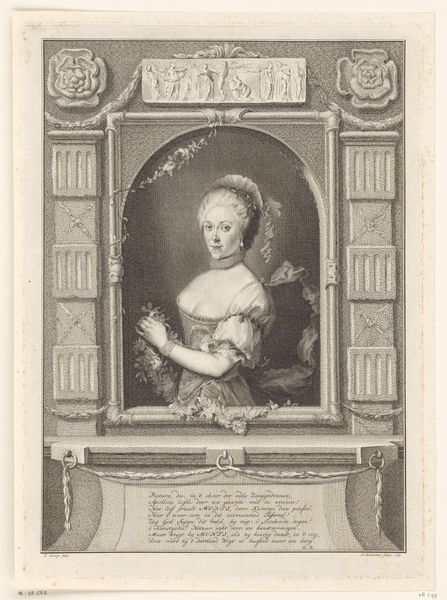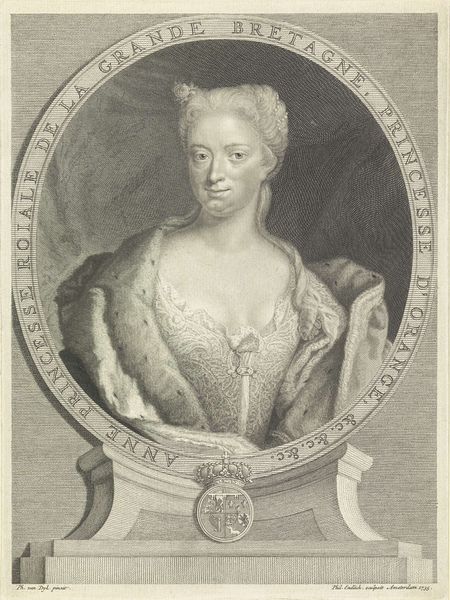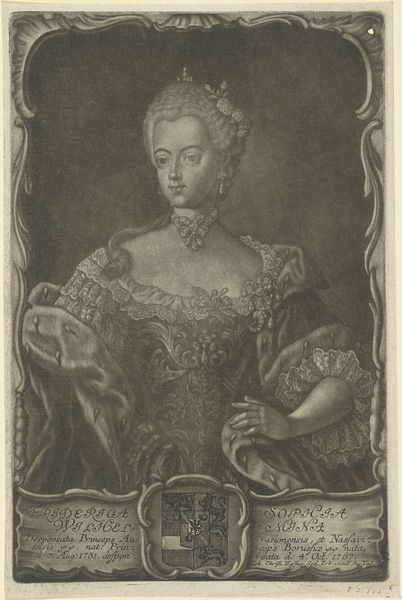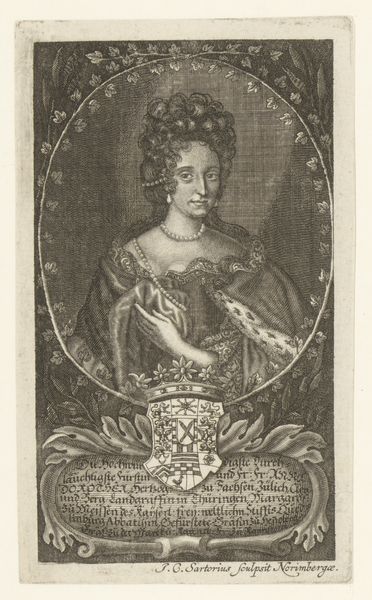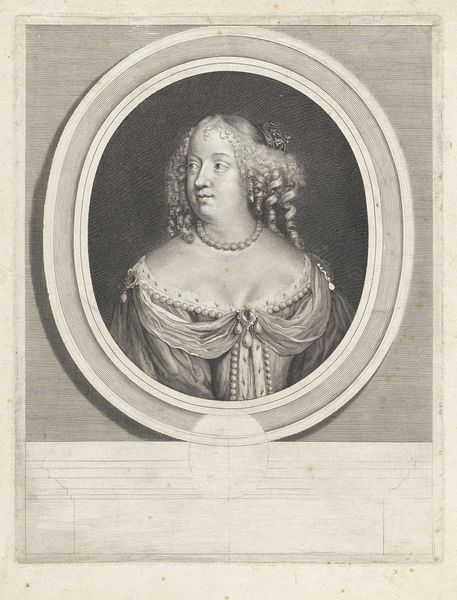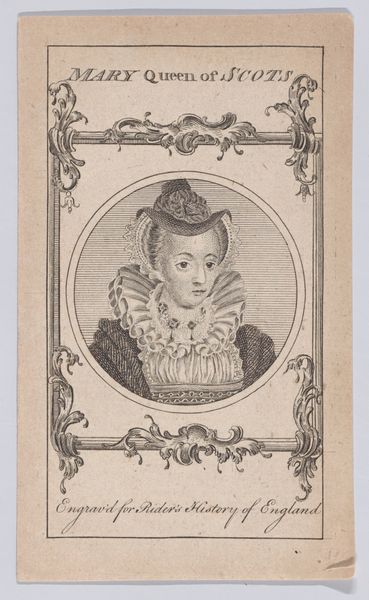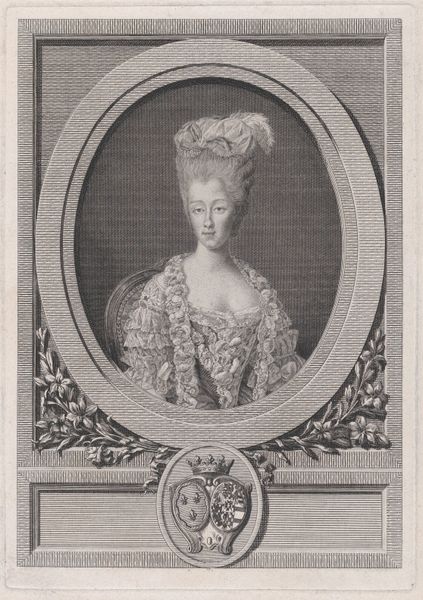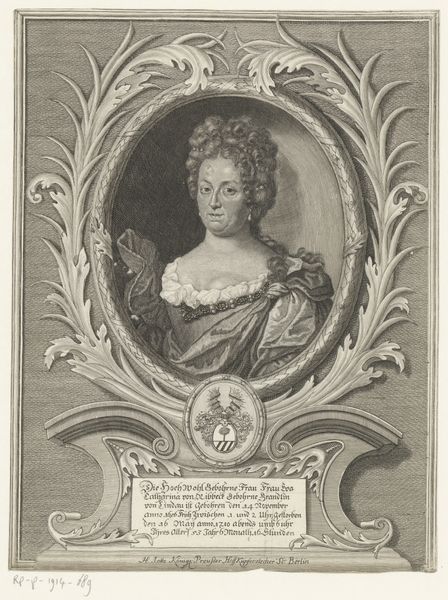
print, engraving
#
portrait
# print
#
historical fashion
#
coloured pencil
#
history-painting
#
engraving
#
miniature
#
rococo
Dimensions: height 296 mm, width 186 mm
Copyright: Rijks Museum: Open Domain
Editor: Here we have a print from between 1750 and 1755, "Portret van Carolina, prinses van Oranje-Nassau," by an anonymous artist. It's a beautiful, detailed rococo engraving, with some colored pencil work. I am immediately drawn to how it uses emblems of power but in miniature. How do you interpret the visual symbols? Curator: It's fascinating how symbols coalesce around a person to project power, isn't it? Notice how Carolina is framed—literally—within an ornate cartouche topped with the Dutch coat-of-arms. What feelings do the lions flanking the crest evoke? They guard dynastic heritage, right? And her clothing. Look at the carefully placed roses, are they personal or dynastic emblems? How are personal adornment and the machinery of dynastic authority intertwined? Editor: The roses, a subtle yet effective addition. I'm guessing that it hints at feminine virtues in contrast with masculine emblems like lions. Curator: Exactly. Consider the tradition of floral symbolism. A rose, often linked to love, beauty, but in this context, wouldn’t you say they become metaphors for a certain type of benevolent leadership, distinct from pure martial power? Also, observe her gaze; direct, yet softened, meeting the viewer’s eye. Is it assertive, or inviting, and why? Editor: I think that rose conveys delicate strength. So the print isn't simply a portrait; it’s a calculated projection of leadership through symbols that viewers would decode. Curator: Precisely! It is cultural memory encoded for her contemporaries. Understanding these symbols unlocks layers of meaning that speak to the complex interplay of power, gender, and identity. We gain insight into how Carolina and her role were meant to be perceived. Editor: Thinking about those symbols makes the portrait come alive. It makes it more than just a pretty picture; it's a statement. Curator: Indeed. Each element chosen carefully crafts her narrative within the context of her time and continues to speak across time.
Comments
No comments
Be the first to comment and join the conversation on the ultimate creative platform.
